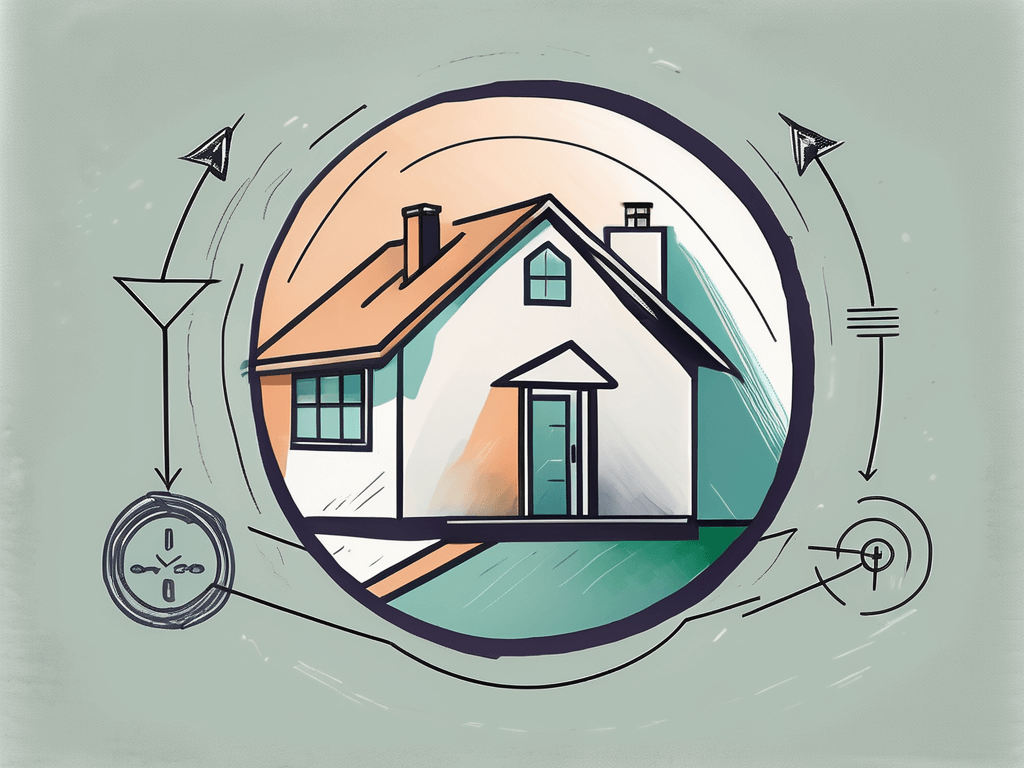In the world of real estate, there are many financial tools for buyers and sellers. One nifty option is the Reverse Annuity Mortgage. This cool financing method has become popular lately, offering a handy way for homeowners to boost their income during retirement. A Reverse Annuity Mortgage lets you turn your home’s value into cash without moving out. Statistics show more seniors using it to cover daily expenses. Imagine not worrying about bills because your house pays you back! Curious to learn more about this game-changer in real estate?
What is Reverse Annuity Mortgage
Before delving into the intricacies of a Reverse Annuity Mortgage, let’s start with the basics. A Reverse Annuity Mortgage, also known as a Home Equity Conversion Mortgage (HECM), is a loan designed exclusively for homeowners aged 62 or older. Unlike traditional mortgages, where the borrower makes monthly payments to the lender, a Reverse Annuity Mortgage works in the opposite way.
With a Reverse Annuity Mortgage, the lender makes payments to the homeowner, allowing them to tap into the equity they have built up in their home. These payments can be received as a lump sum, a line of credit, fixed monthly payments, or a combination of these options.
One of the key benefits of a Reverse Annuity Mortgage is that it provides retirees with a source of income without having to sell their home. This can be particularly advantageous for older adults who want to age in place and maintain ownership of their property. Additionally, the funds received from a Reverse Annuity Mortgage are typically tax-free, providing further financial flexibility for homeowners.
It’s important to note that while a Reverse Annuity Mortgage does not require monthly repayments, the loan must eventually be repaid. This usually occurs when the homeowner passes away, sells the home, or no longer uses it as their primary residence. At that point, the loan balance, including accrued interest and fees, must be settled. However, any remaining equity in the home after the loan is repaid can still be passed on to the homeowner’s heirs.
Understanding Reverse Annuity Mortgage
The concept of a Reverse Annuity Mortgage may seem complex at first, but it is relatively straightforward. The loan balance of a Reverse Annuity Mortgage increases over time as the homeowner receives payments. This is because interest is added to the loan balance each month.
However, the homeowner is not required to make any payments towards the loan as long as they continue to live in the home. The loan is only repaid when the homeowner sells the property, moves out of the home, or passes away. At that point, the loan is typically paid off using the proceeds from the sale of the home.
One key benefit of a Reverse Annuity Mortgage is that it can provide older homeowners with a source of income in retirement. This can be particularly useful for individuals who have a significant amount of equity in their homes but may be struggling to meet their day-to-day expenses. By tapping into the equity through a Reverse Annuity Mortgage, retirees can supplement their retirement income without having to sell their home.
It’s important to note that Reverse Annuity Mortgages are regulated by the government to protect both lenders and borrowers. Borrowers are required to undergo counseling before obtaining a Reverse Annuity Mortgage to ensure they understand the terms and implications of the loan. Additionally, there are limits on how much equity can be accessed through a Reverse Annuity Mortgage, which helps to prevent borrowers from owing more than the value of their home.
Why Is Reverse Annuity Mortgage Important?
The Reverse Annuity Mortgage plays a crucial role in the real estate industry for several reasons. Firstly, it provides senior homeowners with the financial flexibility they need during their retirement years. By tapping into their home equity, they can access a source of income without having to sell their property.
Secondly, a Reverse Annuity Mortgage enables older individuals to age in place comfortably. Many retirees wish to remain in their homes for as long as possible, and a Reverse Annuity Mortgage allows them to do so by providing additional funds to cover living expenses or medical costs.
Furthermore, Reverse Annuity Mortgages offer a unique advantage by allowing borrowers to receive payments instead of making monthly mortgage payments. This feature can be especially beneficial for retirees on fixed incomes, as it provides a steady cash flow without the burden of additional bills.
Additionally, Reverse Annuity Mortgages come with flexible payment options, giving borrowers the freedom to choose how they receive their funds. Whether through a lump sum, monthly payments, or a line of credit, individuals can tailor their financial strategy to best suit their needs and goals.
Example of Reverse Annuity Mortgage
Let’s consider an example to illustrate the benefits of a Reverse Annuity Mortgage. Imagine Mary, a 70-year-old homeowner who owns her property outright. She is looking for a stable source of income to supplement her retirement savings. Instead of selling her home, Mary decides to apply for a Reverse Annuity Mortgage.
After conducting thorough research and consulting with a reputable lender, Mary receives monthly payments from the lender, which she can utilize to cover her living expenses. This additional income allows her to maintain her desired lifestyle while remaining in the comfort of her own home.
Furthermore, with a Reverse Annuity Mortgage, Mary retains ownership of her home, providing her with the peace of mind that she can age in place without worrying about losing her property. This financial solution offers Mary a sense of security and stability in her retirement years.
Moreover, the beauty of a Reverse Annuity Mortgage lies in the fact that Mary does not have to make monthly repayments. The loan only becomes due when Mary decides to sell the property, move out permanently, or pass away. This flexibility gives Mary the freedom to enjoy her retirement without the stress of traditional mortgage payments.
Why Is Reverse Annuity Mortgage Important in Real estate?
From a real estate perspective, the Reverse Annuity Mortgage has a significant impact. It opens up opportunities for senior homeowners to unlock the equity in their properties, providing them with financial stability and security. This, in turn, contributes to the overall stability of the real estate market, as it reduces the number of potential sellers in search of alternative housing options.
Additionally, the Reverse Annuity Mortgage allows real estate professionals to cater to a specific demographic. By understanding the unique needs of senior homeowners, real estate agents and brokers can provide specialized services and guidance to help them navigate the complexities of the housing market.
Moreover, the Reverse Annuity Mortgage plays a crucial role in estate planning for seniors. By leveraging the equity in their homes through this financial tool, older homeowners can secure a source of income that can support them in their retirement years. This strategic approach not only benefits the individuals directly involved but also has broader implications for the intergenerational transfer of wealth within families.
Furthermore, the availability of Reverse Annuity Mortgages can stimulate economic activity in the real estate sector. As more senior homeowners opt for this financial solution, it can lead to increased property transactions, renovations, and investments, ultimately driving growth and innovation in the housing market.
Conclusion
In summary, a Reverse Annuity Mortgage offers a valuable solution for senior homeowners seeking financial flexibility and stability during their retirement years. By tapping into the equity in their homes, these individuals can access additional funds without the need to sell their property. With its importance in the real estate market, the Reverse Annuity Mortgage proves to be a beneficial tool for both homeowners and industry professionals alike.



